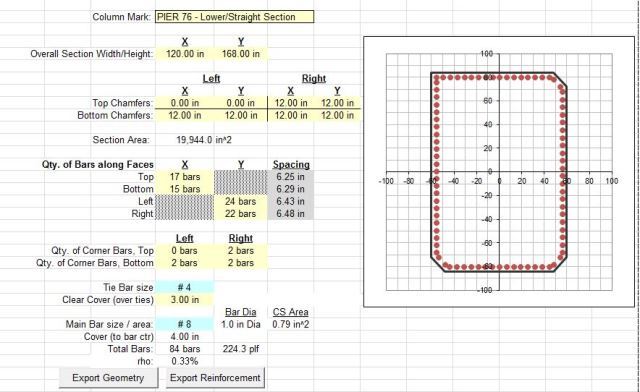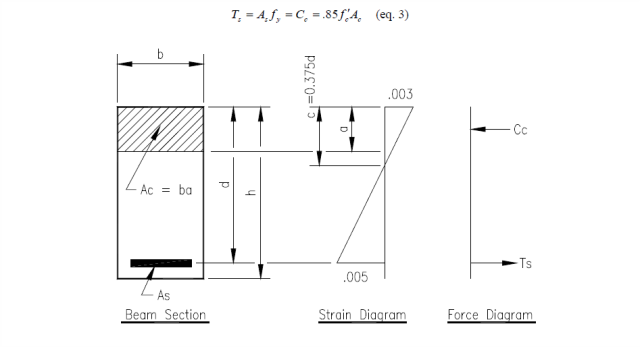justhumm
Structural
- May 2, 2003
- 112
I am looking at the proposed replacement of an existing bridge pier column. The cross section I'm looking at is large (approx. 10-ft x 14-ft). Even when using reduced section/strength properties similar to ACI (318-08, 10.8.4), initial analyses indicate that the section is adequate with only 33% reinforcing steel.
Looking at a rough sketch of the cross section, it doesn't seem like it should be enough steel, but looking at the size and spacing of the bars, it seems like it would be excessive. So part of me is starting to question if using the classical stress-strain relations for bending would still apply for a column of this size.
Does anybody know of any references or specifications that discuss bending of large concrete columns and minimum steel requirements?


Looking at a rough sketch of the cross section, it doesn't seem like it should be enough steel, but looking at the size and spacing of the bars, it seems like it would be excessive. So part of me is starting to question if using the classical stress-strain relations for bending would still apply for a column of this size.
Does anybody know of any references or specifications that discuss bending of large concrete columns and minimum steel requirements?




